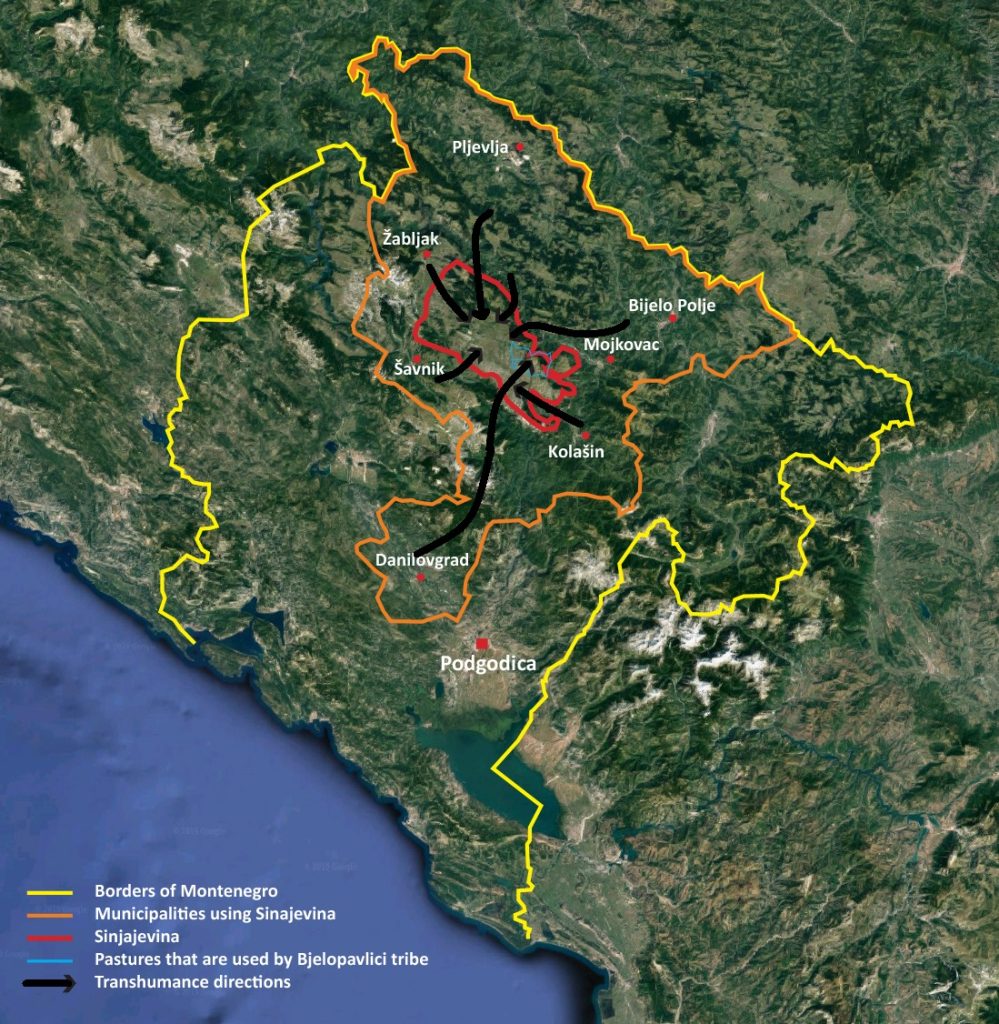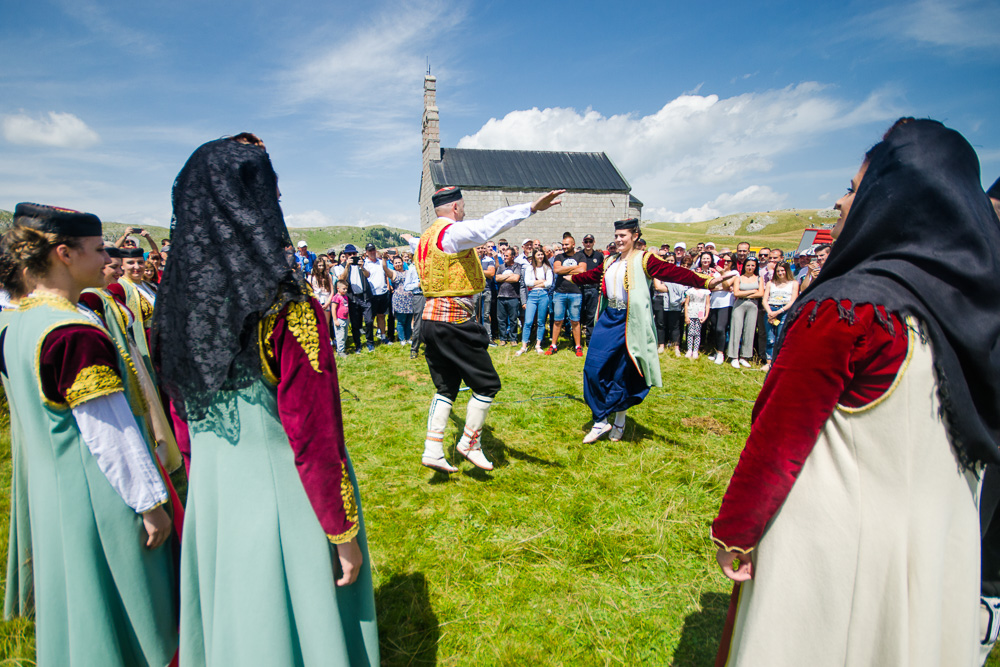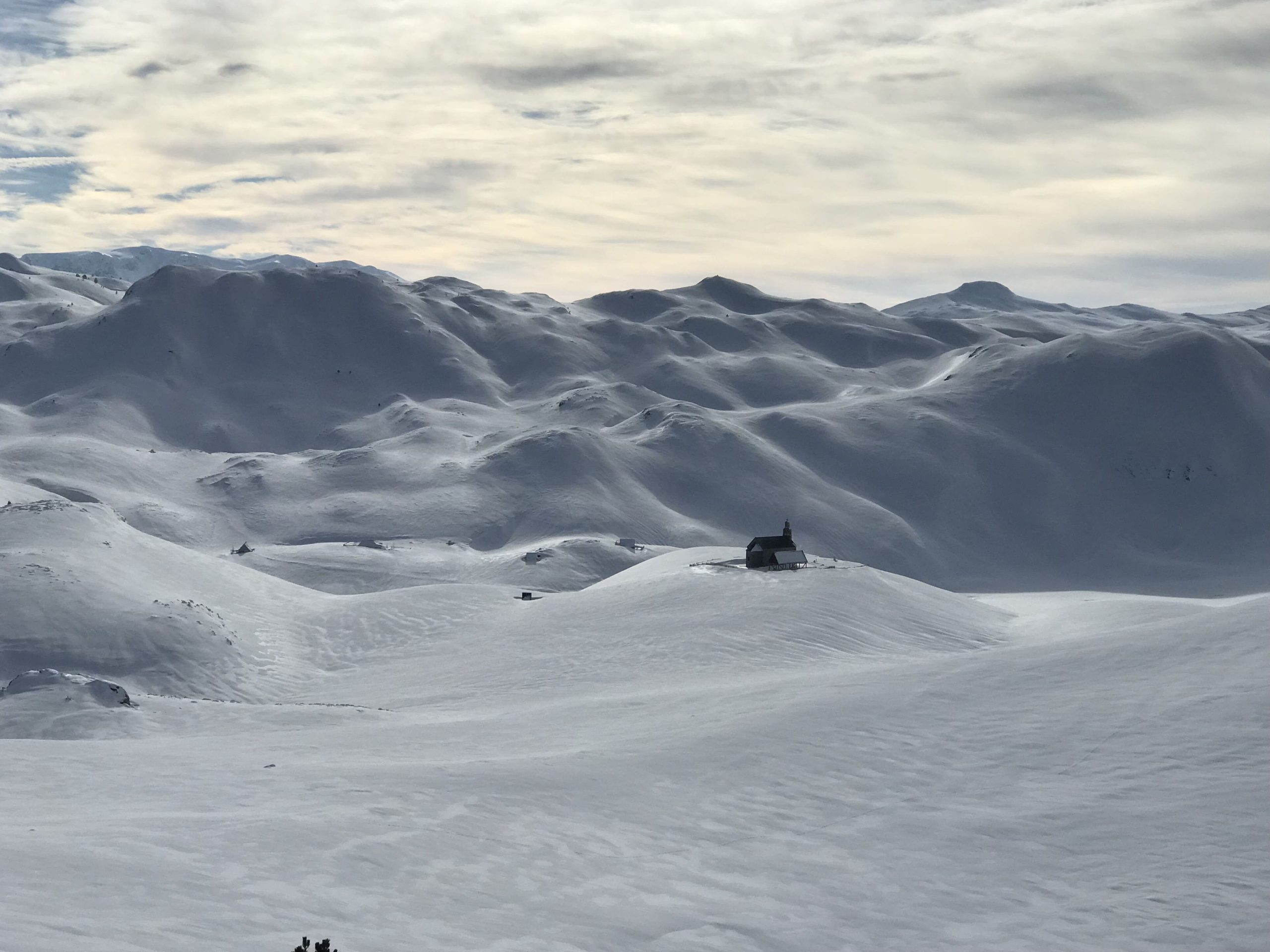SINJAJEVINA
“CONSERVATION THROUGH USE” AT THE CORE OF THE DINARIC ALPS
Sinjajevina has a unique and outstanding natural and cultural heritage. A way of life that is still alive and that makes it doubly valuable for Europe, as it is one of the last places of this type where traditional farming continues to exist so authentically and in equilibrium with the environment. At the same time, it holds some of the most extraordinary culinary heritages and products of outstanding quality, which at the same time assures through its traditional and extensive way of life, an expanded biodiversity dependent of these same traditional practices, specially pastoralism. Moreover, it constitutes a jewel of culture and national identity that should be protected and promoted.
The Sinjajevina-Durmitor mountain range is one of the largest mountain grasslands in Europe: an over 1.000 km2 limestone highland between 1,600 and 2,500 masl, with a unique biodiversity that has coevolved with pastoralism through millennia. The importance of this biodiversity hotspot within Montenegro has been recognized through the establishment of numerous Natural and Cultural protected areas in the region.

Sinjajevina lies within the UNESCO Tara River Basin Biosphere Reserve, surrounded by numerous national and natural parks and World Heritage sites. The European Council has recognized it also as an EMERALD site and moreover is an IPA (Important Plant Area), while the EU has proposed it as a Natura 2000 area with a Special Protection for birds. As further evidence of the area’s importance, the Agency for Nature and Environmental Protection of Montenegro published a study in 2016 concluding that a Regional Natural Park for Sinjajevina should be created, including a zone II of special protection.
CHALLENGES
KEEPING THE “KATUNS” ALIVE
Sinjajevina’s rich ecology and outstanding landscapes is not only a product of nature. It is also the inherited and cumulated work of pastoralism over millennia. Indeed, this area represents an increasingly rare symbiosis between human societies and the environment, and it stands as an excellent example of sustainable development and cultural resilience for Europe and the world.
These ecosystems of complex and fragile interactions between humans and the environment, with their unique bio-cultural diversity, exist because of the thoughtful use and concerted governance by local communities through generations. In fact, the ecosystem itself has been molded by – and fully depends on – the wisdom and traditional knowledge of these pastoralist communities.
The highland traditional pastoral settlements, or “katuns”, scattered in more than hundred over all the territory of Sinjajevina, belong to eight major tribal groups. Each tribe and each clan within each tribe has designed specific management rules to regulate access to pastureland over annual cycles that protect their sustainable uses, while adapted to their needs and at the same time coordinated with the rest of groups using Sinjajevina. Within the IRIS Project, GEODE has come to study and publically reaffirm these values of Sinjajevina, while fully conscious that it is under the severe threat of a military ground creation. And this as much as possible future massive tourism or global environmental degradation like in its neighboring Durmitor that have almost completely emptied the territory from its old practices. Any action over the territory has to be agreed with its local communities from whom depend the pastoral landscape, and who are the continuous creators of this living heritage of Sinjajevina, (pastoralists, farmers, honey producers, wild berry collectors, herb gatherers, etc.).
PERSPECTIVES
PROMOTE LOCAL SUSTAINABLE ECONOMY AND AVOID LAND GRABBING PROJECTS
Today Sinjajevina, like many other Montenegrin mountains, suffers from severe depopulation and abandonment connected to, among other factors, the harsh living conditions, the lack of services and the challenge to sell local products. Even current territorial planning can be diametrically opposed to traditional pastoralism, like the military training ground officially created in the territory in 2019, to which a civic mobilization opposed and reached to leave it in standby since 2020.
Nevertheless, it is important that the katun way of life is maintained: it assures a myriad of benefits for the ecosystem and society at large, including important biodiversity conservation and ecosystem services but also outstanding landscapes and gastronomic traditions, while staying highly productive and being the survival of a millenary culture.




